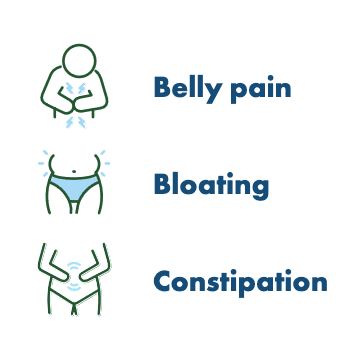Living an Active and Healthy Life With an Ostomy
Living with an ostomy can present many challenges. There’s the emptying and changing of your ostomy bag, navigating travel, and building a circle of support. We’ve already covered these topics in a previous blog post, which may be more helpful to those with a newer ostomy than to someone who’s an ostomy pro.
Much of the resources on living with ostomies focus on surviving, but what about thriving? Let’s discuss living an active and healthy life with an ostomy!
Nutrition
If you’ve recently had ostomy surgery, it’s essential to follow the guidance of your healthcare team about what to eat after surgery. According to a guide from the United Ostomy Associations of America (UOAA), your team will help you slowly broaden your diet after surgery and beyond.
Some people might find high fiber foods and raw fruits and vegetables hard to tolerate at first. While these are usually the cornerstone of a healthy diet, you’re going to want to take it slow. One tip is to use a food journal to help you figure out how these foods make you feel.
Changes in your diet can also help control stool odor. Fatty foods, sulfur-containing foods, and lactose (from dairy products) can all potentially increase stool odor. Before removing foods from your diet, talk to your team. You can also ask about using a lubricating pouch deodorant to help with odor.
One important goal of ostomy nutrition is to be able to eat the broadest diet possible so you can get plenty of nutrients to support your health.
Now that we’ve talked about food, let’s move on to drinks!
Hydration
The colon (or large intestine) is responsible for absorbing fluids back into the body. This is why dehydration is especially a concern for those with an ileostomy, where the colon is bypassed or removed.
Signs of dehydration include extreme thirst, weakness, lightheadedness, dark urine, and decreased urination. Anything that causes you to sweat more, like exercise or spending time in the heat, will put you at a higher risk for dehydration.
But dehydration can be prevented!
According to the UOAA guide, you should drink 8-10 glasses of water per day. You can also get more fluids by eating foods that are high in water like watermelon (hence the name!), peaches, lettuce, and tomatoes.
While it’s important to get enough fluids, you don’t want to forget about electrolytes!
The UOAA guide recommends using drinks that contain electrolytes (sodium, potassium, etc.), but are also low in sugar. There are also special electrolyte drinks available if needed.
Physical Activity
If you were physically active before your surgery, you may be itching to get back out there!
But remember that your healthcare team needs to clear you before getting active again. One concern is the risk of developing a hernia.
Leakage and skin irritation can also occur from physical activity, but there are special types of support garments that can help.
It’s important to remember that your nutrition, and especially hydration, is even more important if you’re exercising. If you need more help in these areas, you can work with a registered dietitian for personalized guidance.
Ostomy Academy
Looking for more ostomy resources?
Ostomy Academy is a free quarterly webinar put on by the United Ostomy Associations of America (UOAA) and powered by 11 Health.
The next webinar is called Educate & Navigate: Life with an Ostomy and will be held Tuesday, September 14, 2021 at 6pm EDT (3pm PDT). Click here to register and to access free recordings of past webinars!
Resources:
Listen to our
latest Podcast!







